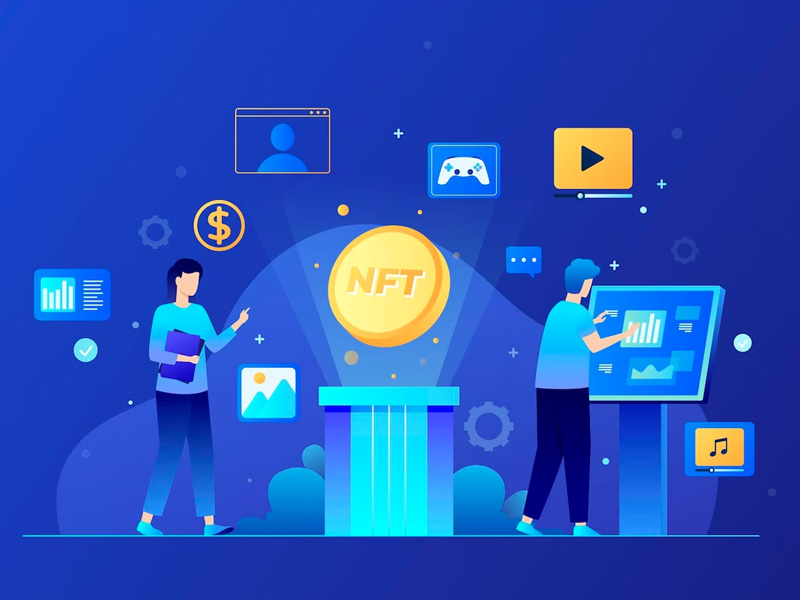
Crafting an effective sales pitch is key to winning new clients and opportunities in the contingent staffing industry. With dedication and focus, any bench sales professional can improve their pitching skills and build a winning portfolio.
This article aims to provide helpful strategies for successful bench sales presentations in C2C and best practices for developing compelling C2C bench sales pitches by focusing on clear communication, understanding client needs, and crafting a persuasive message. By keeping an open mind and continuous learning approach, one can craft highly effective pitches that resonate with clients.
Crafting Persuasive Pitches for C2C Staffing
The first step is to understand your audience and their unique needs. Make sure to thoroughly research the client, their company culture, objectives, pain points, and desired outcomes. Tailor your message based on their specific situation rather than reciting a generic pitch. Show them you took the time to understand their business.
Consider conducting brief phone interviews with key contacts before presenting to gather valuable insights. Probe questions around their staffing problems, hiring challenges, project deadlines, budget constraints, and desired contractor skill sets. This qualitative research will allow you to craft a customized message that addresses their exact requirements rather than pitching broadly.
When discussing a potential solution, focus the conversation on the client's goals and priorities rather than promoting your agency. Emphasize the benefits they will gain such as increased productivity, improved project timelines, budget efficiencies, higher quality work, and reduced hiring headaches.
Quantify these advantages through relevant statistics and case studies that demonstrate real cost savings and ROI. Inspire confidence that partnering with your firm will directly solve their unique pain points.
Highlight examples of similar clients you have helped in their industry and region, if possible, to establish credibility and prove you understand their business landscape. Provide specifics on how other companies leveraged your services to overcome similar challenges. Offering concrete proof positions your agency as a knowledgeable and trusted partner capable of achieving its objectives.
Effective Communication in C2C Bench Sales
In the world of C2C (Corp-to-Corp) bench sales, effective communication is the linchpin that holds together successful transactions. Bench sales involve the process of marketing and selling the services of IT consultants who are on the bench (available for projects) to potential clients. Clear and concise communication is crucial at every stage of this process, from initial outreach to negotiation and finalizing contracts.
To establish effective communication in C2C bench sales, recruiters must first understand the unique needs and preferences of their target clients. This involves researching the client's industry, project requirements, and organizational culture. Tailoring communication strategies to align with the client's expectations enhances the likelihood of a positive response.
Timeliness is another critical factor in C2C bench sales communication. Given the fast-paced nature of the IT industry, recruiters need to be prompt in their responses and updates. Clients appreciate proactive communication that keeps them informed about potential candidates, project timelines, and any adjustments to the proposed terms.
Furthermore, transparency builds trust in C2C bench sales. Conveying the strengths and capabilities of the consultants, along with any potential challenges, helps manage client expectations and fosters a collaborative partnership. This transparency extends to contract negotiations, ensuring that both parties are on the same page regarding rates, payment terms, and other relevant details.
Ultimately, effective communication in C2C bench sales is about creating compelling C2C bench sales pitches and professional impression. Recruiters who can articulate their value proposition, understand client needs, and navigate negotiations with clarity are more likely to establish long-lasting and mutually beneficial relationships. Once the research stage is complete, it's time to craft the verbal pitch presentation itself. Here are some best practices for communicating your message clearly and persuasively:
Structure your presentation in a logical flow that introduces the client's challenges, proposed solutions, benefits, and next steps. Keep it simple to follow.
Limit pitches to no more than 10-15 minutes leaving ample time for questions. Customers have short attention spans so keep the message concise yet compelling.
Verbal communication should mirror the written content with aligned takeaways and consistency in the benefits mentioned. Practice your delivery until it flows smoothly.
Make eye contact and engage customers through your tone, body language, and enthusiasm. Smile, maintain an open posture, and vary vocal qualities to hold attention.
Use natural language your client would understand rather than stuffy industry jargon. Explain complex concepts simply through relatable, everyday analogies.
Leverage persuasive techniques like the repetition of key points, pausing for emphasis, concise yet compelling word choice, and call-to-actions for the next steps.
Involve clients by asking thoughtful questions that encourage participation and investment in the solution. Let them vocalize their needs to build rapport.
Express confidence through passionate conviction yet remain a knowledgeable consultant, not a pushy salesperson. Make recommendations, not demands.
With practice, any knowledgeable staffer can polish presentation skills to more clearly and persuasively communicate compelling solutions through strategic coaching, role plays, and frequent customer interactions. Focusing on clients' objectives in every sales discussion leads to strengthened relationships and increased wins.
Perfecting Your Pitch in C2C Recruitment
Perfecting your pitch in C2C (Corp-to-Corp) recruitment is a skill that can significantly impact your success in attracting clients and candidates. A compelling pitch goes beyond listing qualifications and experiences. It's about crafting persuasive pitches for C2C staffing and narrative that resonates with your audience and distinguishes your services in a competitive market.
First and foremost, understanding your audience is key to a successful pitch. Tailor your message to address the specific pain points and needs of your clients. Highlight how your C2C recruitment services can alleviate their challenges and contribute to the success of their projects. This requires thorough research on the client's industry, organizational culture, and current staffing needs.
In addition to understanding your clients, you must also articulate your unique selling propositions (USPs) clearly. What sets your C2C recruitment services apart from the competition? Whether it's a robust network of top-tier candidates, a streamlined recruitment process, or innovative solutions to common industry challenges, emphasizing these points will capture the attention of potential clients.
Ultimately, a well-crafted pitch in C2C recruitment is a dynamic and evolving process. Regularly review and refine your pitch based on market trends, client feedback, and the evolving needs of the industry. Continuous improvement ensures that your pitch remains compelling and relevant in a dynamic recruitment landscape. Fine-tuning all elements of the pitch with continuous improvement is key.
Have other recruiters or clients review presentations to identify any gaps, areas for refinement, or unclear explanations. Incorporate constructive feedback by adjusting material or delivery techniques. Consider the following additional best practices:
Leverage pitch-tracking software to quantify results for each customized message. Track performance metrics like conversion rates to isolate high and low-performing content.
Maintain a portfolio of winning pitch decks to reference valuable client profiles, solutions, case studies, and statistics that resonated most successfully in past deals.
Experiment with interactive demonstration platforms or client portals to engage prospects through dynamic, multimedia content beyond static PowerPoints.
Try scheduling follow-up discovery calls within a week of pitching to address any open questions quickly and capitalize on the momentum. Stay top of mind.
Maintain thorough notes on conversations to remember key prospects, decision makers, stated needs and next steps agreed upon. Follow-through is crucial.
Express appreciation through handwritten thank you cards highlighting one beneficial aspect discussed to further cement relationships.
With dedicated benchmarking, testing, and continuous tweaking, you can maximize response rates by customizing each approach based on proven best practices tailored for any given sales opportunity. A dynamic process of learning from both wins and losses continually strengthens capabilities over time.
Strategies for Successful Bench Sales Presentations in C2C
A perfect pitch in C2C recruitment also involves showcasing your expertise in the industry. Demonstrate your knowledge of market trends, emerging technologies, and the talent landscape. Clients are more likely to trust a recruiter who exhibits a deep understanding of their industry and can offer valuable insights.
Moreover, perfecting your pitch requires a focus on relationship building. Establishing a rapport with both clients and candidates is essential for long-term success in C2C recruitment. Communicate with authenticity and integrity, fostering trust and credibility in your interactions.
Some final tips for standout bench sales presentations include:
Focus on customer benefits: Explain clearly how their business will specifically gain efficiency, productivity, cost savings, expertise, or competitive edge. Back up claims with solid quantitative or anecdotal evidence.
Tell a compelling story: Craft your message as an engaging narrative that takes prospects on a journey. Use descriptive language and paint a vivid picture of "before" and "after" scenarios.
Highlight your differentiators: What makes your agency uniquely qualified over competitors? Leverage the strongest USPs to position yourself as the clear choice to deliver optimal results.
Call out social proof: Share success stories of customers in similar roles or industries who overcame analogous challenges by partnering with your team. Statistics lend credibility.
Use visual aids effectively: Ensure slides, graphics, or demonstrations supplement rather than compete with speech. Keep the visual design simple yet eye-catching.
Summarize key points: In closing, reiterate two or three primary takeaways that address the core challenges or benefits discussed to solidify message retention.
Ask for the business: Confidently request the next steps like signing an agreement, beginning pilot projects, or setting follow-up appointments. A decisive close inspires action.
With diligent benchmarking, message customization, relationship-building skills, and constant refinement, recruiters can achieve rising win rates through strategic sales presentations. By truly focusing on customers' perspectives and desired outcomes, trusted partnerships form that increase mutual success over the long term.
Conclusion
With patience and perseverance, any C2C sales rep can improve their pitching abilities to craft highly effective sales discussions. The foundational keys include thoroughly understanding prospects, tailoring messages to address unique needs and priorities, communicating clearly through well-structured presentations, gathering continuous feedback, and maintaining client relationships through follow-up and appreciation.
Recruiters who adopt a learning mindset of crafting customized, benefits-driven solutions while concentrating on customer success will develop winning formulas for standing out in this competitive industry. Overall market visibility, closure rates, and business development capabilities increase through dedication to these best practices for persuasive C2C bench sales discussions.

Leave a comments